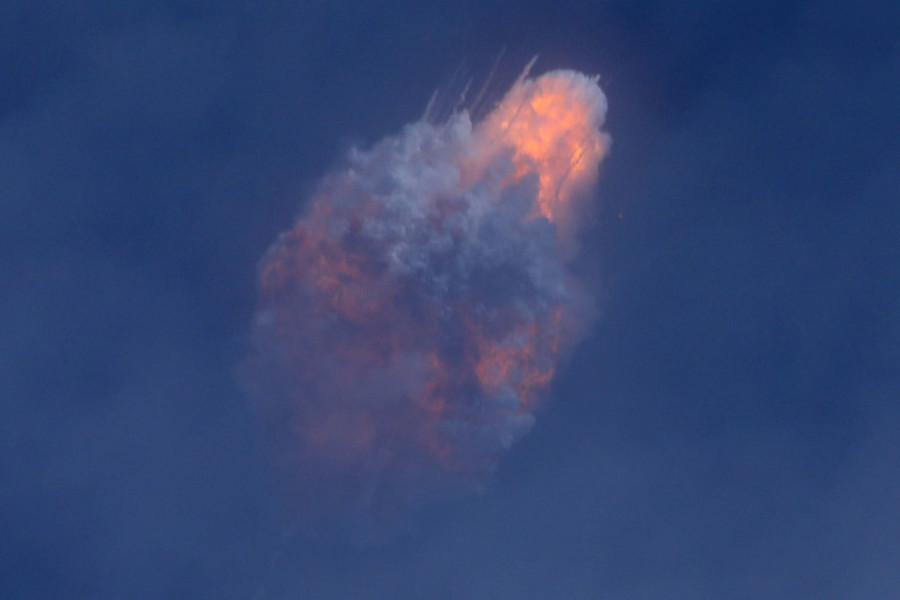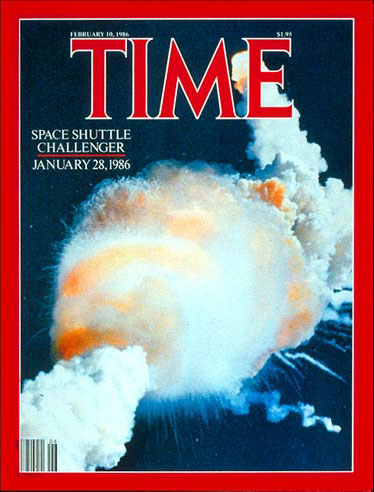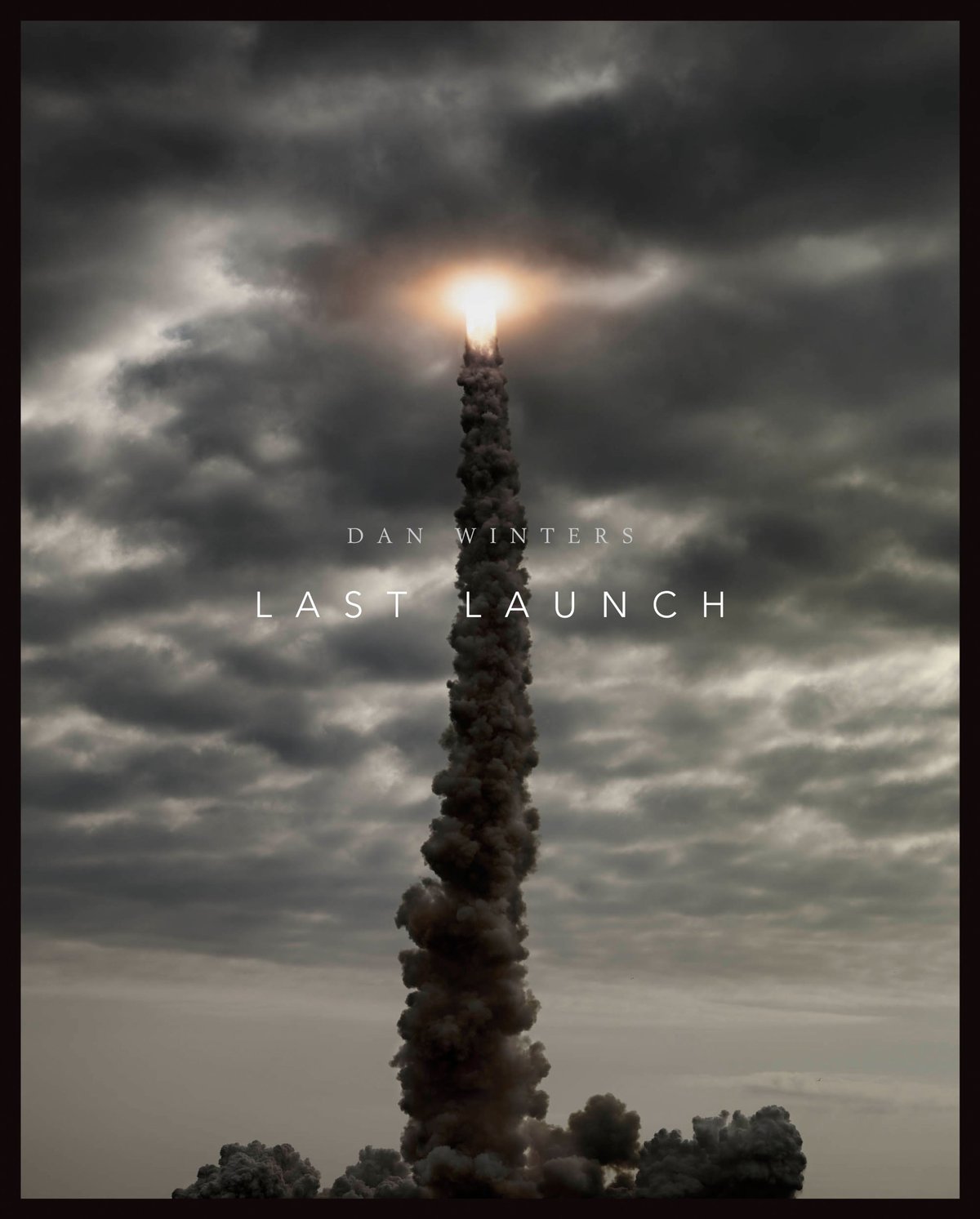Share
Joe Rimkus Jr.’s Hopeful Photo of an Exploding Rocket
On January 28, 1986, the Space Shuttle Challenger exploded during liftoff due to a faulty O-ring design on the rocket booster which allowed hot gas...

On January 28, 1986, the Space Shuttle Challenger exploded during liftoff due to a faulty O-ring design on the rocket booster which allowed hot gas to ignite a fuel tank. STS-51-L was the 25th space shuttle mission, and in the mid-1980s, launches still captured public attention and imagination.
The TV in Mr. Hu’s classroom was already on when I moseyed in before the start of the school day. We were glued to the live coverage and the video of the swan-shaped explosion, cognizant that the crew included Lt. Colonel Ellison Onizuka – the first Hawaii-born and first Asian-American astronaut – and Christa McAuliffe, who would have been the first school teacher in space. As a 7th grader, I was old enough to recognize tragedy, but too young to understand significance.

On hand that day was photographer Bruce Weaver, who has been a mainstay of Cape Canaveral launches for over 30 years. Although the NASA video of the tragedy was available immediately, the grainy, low-resolution video couldn’t hold a candle to the still image that Weaver captured.
What you have to remember about pre-internet 1986 is the considerable weight held by the newspaper A1 image. Newspaper subscriptions were nearly at their peak, and for many, the photo (even in black-and-white as most dailies were at the time) was the first and arguably most important image consumed all day. The covers of TIME and Newsweek held even more significance with their full-color, full-page images culled from a week’s worth of news. Even if your family didn’t have a subscription, you were surely confronted by the covers at the supermarket checkout line.

The February 10, 1986 cover of TIME featured a tight crop of Bruce Weaver’s iconic image taken moments after the initial explosion. Centered around the fireball, the cover cropped out most of the contrails that had already formed.
Technically, Weaver’s image is masterful, and so significant that it is a part of the National Portrait Gallery archives. The framing has great balance, and the exposure is spot on without any blown highlights. The willy nilly appearance of detritus, smoke and contrails is an apt metaphor for the chaos of the day.
Unlike the video feed, the image doesn’t capture the moment of explosion. Rather, you can almost sense Weaver reacting to the explosion in recognition that something has gone terribly wrong. And because of the scale, the aftermath seemingly plays out in slow motion.
Weaver’s image perfectly captured a major inflection point for NASA and space travel. NASA grounded the program for three years, and there was a palpable sense that the heroic age of space flight had ended. The image was just an explosion, but it carried with it the baggage of hubris, bureaucracy and seven dead astronauts.
***
Human tragedy, of course, doesn’t impede human spirit. Shuttle flights resumed in 1988, and carried out significant missions for science and the military. But a growing awareness about the real risks of space flight perhaps dampened the enthusiasm for launch photography.
The disintegration of Space Shuttle Columbia in 2003 put another nail in the coffin for the increasingly antiquated, expensive and dangerous shuttle technology that originated in the 1970s.

And even a beautiful book like Dan Winter’s Last Launch in 2012 couldn’t capture the public’s attention the way Weaver’s image 26 years earlier.
***
I am no Elon Musk fanboy, but I can’t help but be impressed with his mastery of combining a flair for the theatrical (some might say elan) with the conquering of incredible technical feats. Both SpaceX and Jeff Bezos’ Blue Origin have provided viral YouTube worthy moments with their self-landing rockets. And the flight paths have allowed photographers like Jesse Watson to capture amazing footage of launches that have re-ignited (pun intended) public interest in space travel.
On Sunday, January 19, 2020, Musk blew up a rocket on purpose to test a crew escape system – and I’ve never felt so hopeful after seeing a photo of an explosion.
A minute into the flight at an altitude of 12 miles, the Crew Dragon capsule separated from a SpaceX Falcon 9 rocket. As the capsule ascended to a max altitude of 27 miles, engineers deliberately cut power to the rocket, and let it tumble earthbound before initiating a self-destruct.
Freelancer Joe Rimkus Jr., a long-time Miami Herald staff photographer, captured the moment in an image widely circulated by Reuters. Unlike the unruliness of Challenger’s unplanned explosion, the Falcon 9 explosion appears almost orderly. It’s the emerging phoenix. The cloud cover mutes the color palette, turning the image into something almost painterly.
Data analyst and space photography enthusiast Michael Cain captured a similar image moments after Rimkus’ image from a boat charter using a crop sensor Nikon D500 with a 200-500mm lens. Whereas Rimkus’ image is more egg-shaped, Cain’s image extends off the frame in a single direction. The chaos of Challenger’s “swan” erased.
As is the case with much photography, neither image means much without context. But the 34 years separating Weaver’s Challenger image from Cain and Rimkus’ Falcon 9 photo represent a night and day shift. If Challenger is our loss of innocence, then Falcon 9 represents renewed hope.
An image made me feel that.


